![]()
![]()
![]()
Use LEFT and RIGHT arrow keys to navigate between flashcards;
Use UP and DOWN arrow keys to flip the card;
H to show hint;
A reads text to speech;
45 Cards in this Set
- Front
- Back
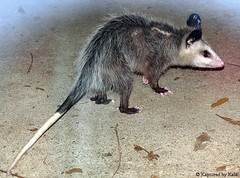
|
Habitat: Woodchuck burrows hollow trees and brush piles Diet: Omnivore and forage at night with smell and hearing Offspring: 7-9 each litter with a life expectancy of 2 years max. |
|
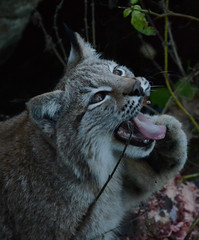
Bob cat |
Habitat: Large tracts of hardwood forests, but also coniferous and mixed forests Diet: Eats mostly small mammals like mice, voles etc but will also take rabbits, porcupines and the occasional bird or snake Offspring: 1-4 kittens per litter, one litter per year, breeding begins at the end of the 2nd year Life Expectancy: 12 years in the wild with fur trapping being the number one killer |
|
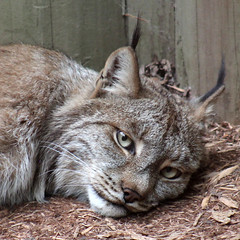
Lynx |
Habitat: Mature coniferous forests with ample coarse woody debris, cedar swamps and upland hemlock and fir forests Diet: Mostly snowshoe hares, but also other small animals, some deer fawns, and game birds Offspring: 2-5 young per litter, 1 litter per year, breeding begins at the second year Life Expectancy: Most die after 4 or 5 years some live up to 15 years, hunting and trapping an issue but deaths related mostly to food shortages |
|
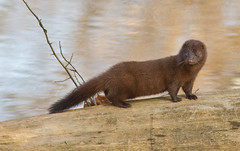
Mink |
Habitat: Streams, ponds, and lakes with brush or rock cover. Most areas of Canada and US (except along Arctic coast). Diet: In summer, crayfish, frogs, small mammals, small fish & waterfowl. In winter, mammals, especially muskrats. Mating: Female enters heat in late winter. 4-9 kits in April/May. Females mature at 4 mo, males at 10 mo. Life expectancy: 10 years in captivity. Preyed upon by large carnivores and fur trappers as well as being subjected to pesticides. |
|
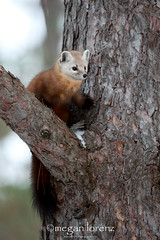
Marten |
Habitat: common in Canadia, rare in US. Reintroduced in WI and MI. Closed coniferous woodlands with shrubs or upland forests. Needs cover. Diet: ground rodents (voles), red & northern flying squirrels. Also, shrews, hares, amphibians, reptiles, birds, bugs, carrion, (and berries in the summer.) Mating: mate in late July/August. 2-3 young born in March/April. Sexually mature at 15-24 months and will breed until 12 years of age. Life expectancy: Record 13 years in wild. Predation is rare but exists and marten is easily trapped and susceptible to deforestation. |
|
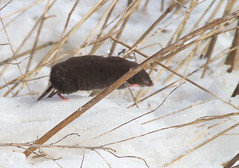
Short tailed shrew |
Habitat: Grasslands, field, Deciduous and coniferous forests and travels in small tunnels under leaf litter Diet: Fungi, Seeds, Earthworms and insects. VENOMOUS Mating: March-Sept 4-7 pups each, with a lifespan of 33 months |
|

Masked shrew |
Location: Across Northern North America, Habitat: Moist Woodlands containing thick leaf litter and decaying logs (but they will live any moist environment) Lifestyle: Loner, Active at all times of day, and rests in a nest made of grass and leaves in a log. Diet: any type of terrestrial insect especially beetles and crickets Mating:March- spet, with an 18 day gestation period, with 3 litters a year containing 5-7 young. After two months they are sexually mature (born naked blind deaf and toothless)
|
|

Star nosed mole |
Habitat: Throughout the great lakes region, prefers wet, and saturated soils, and frequents the borders of swamps, lakes, streams, and isolated areas of poor drainage. Diet: Depends on habitat. Moles near water take mostly aquatic worms, leeches, and larvae of aquatic insects (caddisflys, stoneflys, and midges). If not near water than heavily on eathworms and terrestrial insects lifestyle: excavates shallow tunnels for protection in winter, but also forages above ground. Can spend time swimming in water under ice in winter. The star is still a mystery tentical organ, allowing the mole to feel around in the dark. one study suggests the star is an electroreceptor- capable of decting prey ith an electrical field. Mating: Both males and females reproduce for the first time when 10 months. estimated gestation is 45 days. average litter size is 5. |
|
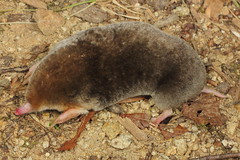
Eastern Mole |
Habitat: Widest geographic distribution of any mole. Occupies only the southern part of the great lakes basin. Lives beneath forests, fields and pastures. lifestyle: Avoids wet soil when burrowing. Uses deeper tunnels during dry spells and winter. solitary. Diet: 25% earthworms, 40% insects (mainly Beetles and ants). additional prey- slugs, centipedes and millipedes |
|

Meadow Jumping Mouse |
Habitat: Broadly distributed throughout eastern and central united states and ranges across canada. Resides in fallow fields, woodland edges, and shrubby thickets. Abundant in moist sites. prefers lush vegetation, grasses, marsh borders. Lifestyle: In late summer, they store fat for winter “sleep”. Hibernates from october to late april or early may. Diet: Omnivore. Grass seeds dominate diet. also eats fruits (blueberry, raspberries, currants, as well as fungi beetles and caterpillars. |
|
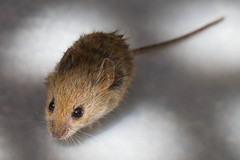
Deer Mouse |
Habitat: One of the most extensive ranges. dwells in open areas like meadows, cultivated fields, pastures, and sand dunes. lifestyle: solitary in summer. Lives with small groups in winter. Active in winter. forages Diet: Omnivore ( mainly seeds and insects) |
|
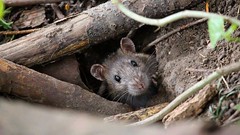
Norway Rat |
|
|
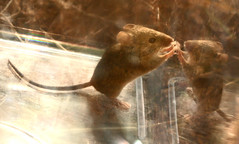
House mouse |
Habitat: lives in close association with humans, but also in cultivated fields, and wooded areas, but likes buildings. Live in small groups with several females and young and a dominate male. construct grassy nests in an underground tunnel or in houses. Diet: Omnivorous. Carrion from garpage but will feed on insects, grasses, seeds, crops ect. Repro: Cease breeding during the winter, 5-10 litters per year with a six young per litter. (Mate 12-18 hours after giving birth dang!) |
|
|
Southern red backed vole - |
Habitat: Inhabits cool, moist, forest of boreal north america. Prefers coniferous forests, but will go in deciduous or mixed woods. Likes litter forest floors with rotting stumps and roots and mossed logs. Active mainly at night, forages everywhere. nests in a tree cavity, territioral. Diet: Opportunistic feeder and changes its diet as the season progresses. Eats leaves, fruits, nuts, seeds, insects. Does Not cache food for winter use, But continues to forage for seeds under the snow Repro: 4-5 young per litter, Lives for 10-12 months. |
|

Meadow vole |
Habitat: Prefers Moist, grassy fields, frequents marshes and bogs with thick grasses. Active primarily at dawn and dusk. Home Range size: less than .3 ha. Can mate year round (avg. 6 offspring) Very High reproductive potential Diet: Grasses and Sedges dominate diet. will eat bark fungi and insects when |
|
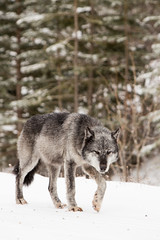
Grey Wolf |
Habitat: Diverse including tundra mountains, prairies, and forests. They need large game and minimal interference from humans. Only remains in the far north of michigan. Lives in packs of 5-9 adults. Diet: Moose, Deer, Ungulates. and ⅓ of diet is smaller animals |
|
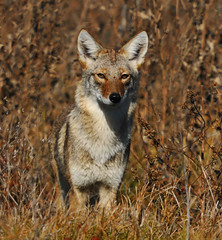
Coyote |
Habitat: generalist; likes open. Praries prushy areas and wooded edges. least tolerant of unbroken forested trackts. Most active at night, doesnt mind humans. hunt at night with theire partner. Diet: Opportunistic and feeds on any wild mammal. scavenge of carcasses. furits and veggies taken in at small amounts. Repro: only comes into heat once a year avg. litter is 6 pups |
|
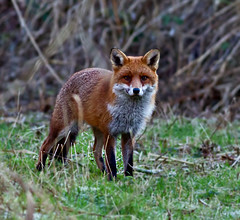
Red Fox |
Habitat: meadow, open field, edge Diet: omnivore (mammals and fruit) Other: colder environment |
|

Grey Fox |
Habitat: more desert Diet: omnivore |
|
|
Fisher |
Habitat: Canada and N. US. Reintroduced to MI and WI. Dense coniferous forest, avoids open areas. Diet: snowshoe hares, red-backed voles, red squirrels, mice, shrews, and porcupine. Grouse, blue jays, and carrion. (berries in summer) Mating: Birth in March/April and mates again. In utero about 1 year. 3 kits per litter. Females mate at 1 year, males at 2 years. Life expectancy: Up to 10 years in wild. Predation rare but possible. (bobcat, red fox, raptors, lynx). Fur trapping and habitat destruction are issues. |
|
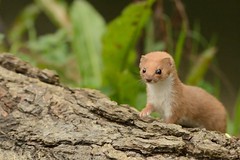
Least weasel |
Habitat: arctic with good cover Diet: small mammals Other: winter active |
|

Short-tail weasel - |
Habitat: northern US/Canada Diet: small mammals and birds Other: turn colors |
|
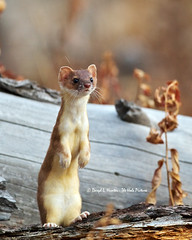
Long-tail weasel - |
Habitat: South US Diet: hare, birds Other: fast metabolism |
|

Muskrat |
|
|

River otter |
Habitat: fresh water Diet: fish; minnows |
|

Badger |
Habitat: open grassland Diet: fossorial mammals Other: winter in den but no hibernate |
|
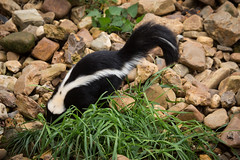
Striped skunk |
Habitat: US, suburban, edge Diet: grubs, invertebrates Other: no hibernation |
|

Woodchuck |
Habitat: open Diet: plants Other: hibernate |
|

13 lined ground squirrel |
Habitat: short grass prairie Diet: omnivores Other: hibernate |
|
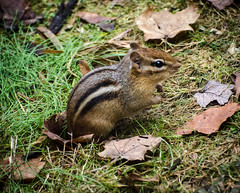
Eastern chipmunk |
Habitat: deciduous forest/edge Diet: seeds, omnivore Other: overwinter underground-no hibernation |
|

Eastern gray squirrel |
Habitat: forest/suburban Diet: mast crop, greens, bird eggs, etc Other: scatter hoarder |
|
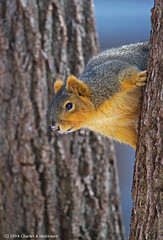
Eastern fox squirrel |
Habitat: forest/suburban Diet: mast crop, greens, bird eggs, etc |
|

Red squirrel |
Habitat: forest/suburban Diet: seeds, fruit, omnivore Other: winter active, territorial, store cones |
|
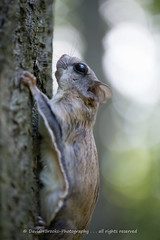
Southern flying squirrel |
Habitat: deciduous forest Diet: omnivore; mast crop, fruit, new growth, arthropods Other: nocturnal, overwinter torpor/group |
|
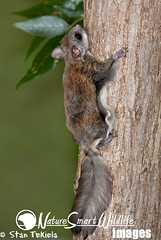
Northern flying squirrel |
Habitat: coniferous forest Diet: omnivore; mast crop, fruit, new growth, arthropods Other: nocturnal, overwinter active/torpor/group |
|

Beaver |
|
|

Big brown Bat |
Habitat: winter- caves and underground mines summer- hollow trees, attics, barns, etc. Diet: beetles, flying insects Other: overwinter locally in groups |
|
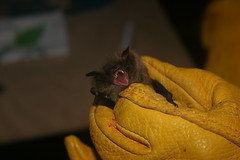
little brown bat |
|
|

Red bat |
|
|
|
Hoary bat |
|
|

Black bear |
Habitat: Decid or conif forests with thick understory, prefer no contact w/ humans Diet: Omnivores, ¼ animal food (carrion and inverts), some fish, rabbit, mouse, ungulate calves,. Fruits, nuts, and berries Other: Line their dens with grass, moss, or leaves |
|
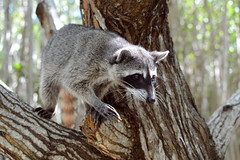
Raccoon |
Habitat: semi-arboreal Diet: generalist Other: |
|
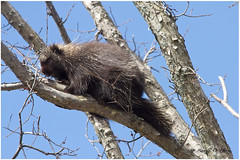
Porupine |
Habitat: deciduous and coniferous forest w/ pine and hemlock Diet: herbiv; pine needles, soft bark, leaves, roots, fruits, seeds, etc Other: males fight for females (can hear loud screams), use quills for defense by turning back to predators |
|
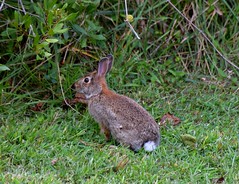
Eastern Cottontail |
Habitat: cover/open meadow/suburban Diet: greens, woody browse in winter |
|
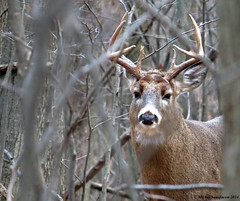
whitetail deer |
Habitat: open forest, meadows, clearings, farmlands Diet: herbivore, grass, herbs, leaves, some crops (apples, celery) Other: males battle with antlers and hooves for mates |

